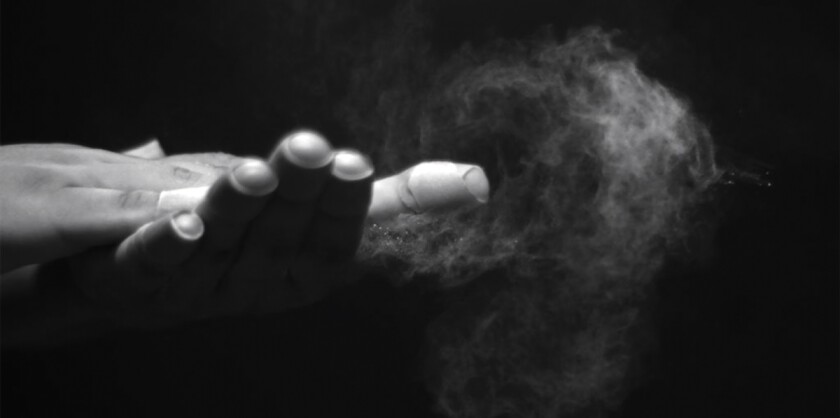If You Can Feel It, Chase It!
In the late 2000s, I became obsessed with weather and meteorology from watching the reality TV series Storm Chasers. Their adrenaline felt contagious through the screen as I watched the teams ride around Tornado Alley each season. Growing up in Orlando, I had the coolest theme parks in my backyard, which were great to visit when we weren’t experiencing some extreme weather ourselves. Universal Orlando’s “Twister: Ride It Out” attraction was a must-do for me every time I visited the park as a teenager. While in college, I interned at a news station, and shadowing the meteorologists there brought back the little weather nerd in me as an adult.
For this month’s Photos of the Month, we’re going to safely dive into some weather and meteorology images from the Emilio Segrè Visual Archives from the comfort of our own internet-accessible devices.
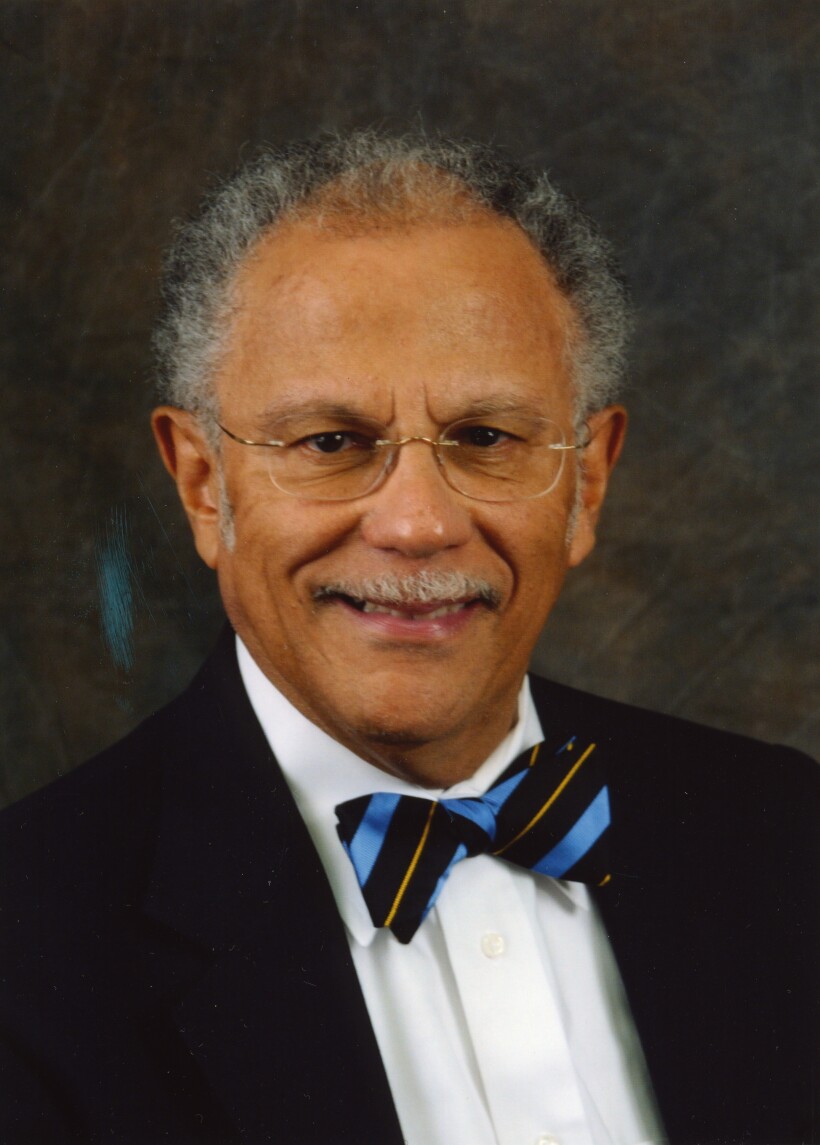
Portrait of Warren Washington.
Photograph by Christy Bowe, ImageCatcher News, courtesy of AIP Emilio Segrè Visual Archives. Washington Warren A1
First, let me introduce you to Warren Washington, an absolute meteorology legend. The Penn State alum was the second African American person in the United States to earn a Ph.D. in meteorology (after Charles E. Anderson - check out our teaching guide)
Throughout his career, Washington advocated for more diversity in the science community, encouraging students of all backgrounds to follow their dreams while also serving as a role model for them along the way. Washington was the first African American president of the American Meteorological Society (AMS), and AMS’s second African American president, Marshall Shepherd, credits Washington’s mentorship and his knowledge for shaping Shepherd’s career as a scientist.
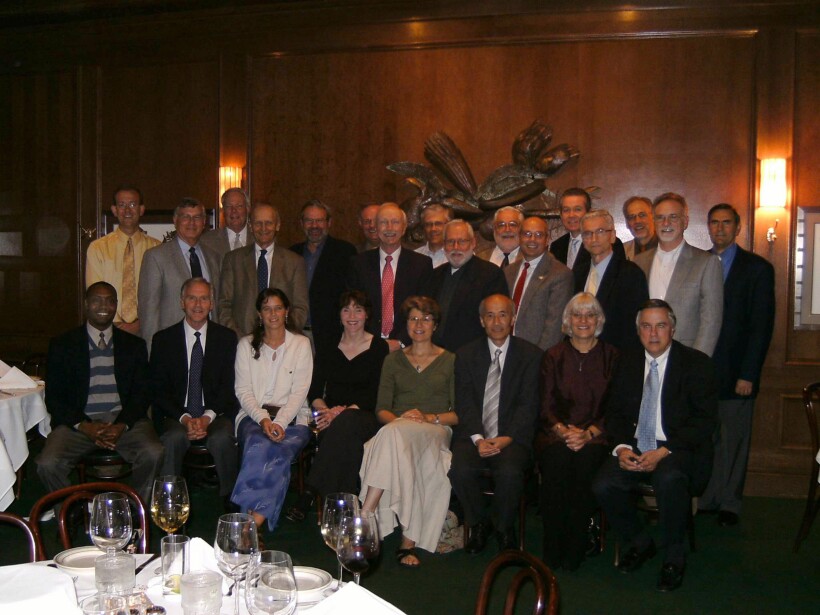
Council and Commissioners of the American Meteorological Society. Marshall Shepherd is the leftmost person seated in the front row.
AIP Emilio Segrè Visual Archives, Gift of Dian Seide. Shepherd Marshall E1
Washington served as a science advisor to former U.S. presidents Carter, Reagan, Bush Sr., and Clinton, and was awarded the National Medal of Science in 2010 by Barack Obama. Washington died last year, on October 18, 2024. From the beginning of his career, he was a pioneer in his field, and his legacy is one that will not be forgotten.
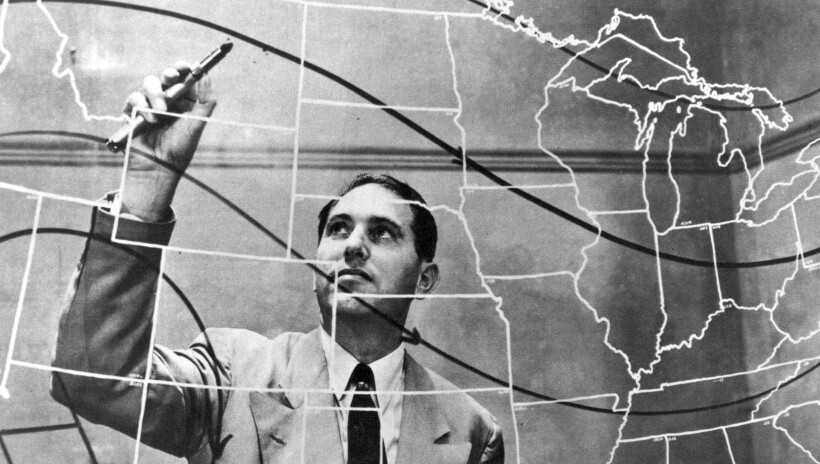
Jerome Namias writes on a glass map.
Collier Magazine 10/18/52, p.17, courtesy of AIP Emilio Segrè Visual Archives. Namias Jerome B1
What is wind? This was a question that I asked the chief meteorologist I was shadowing back when I interned at the news station. We can feel it but can’t always see it the same way we can see rain or snow falling from the sky. The National Oceanic and Atmospheric Administration (NOAA) defines wind as simply being air in motion. The movement of wind is caused by pressure differences, which is also how we see temperature differences occurring throughout our planet.
Jerome Namias, Chief of the United States Weather Bureau’s Extended Forecast Section in Washington, D.C., from 1941-1971, is seen here working out a long-wave wind problem on a glass map. A highlight from Namias’ incredible career includes researching El Niño and the relationship between the oceans and the atmosphere. He also helped to create the system for forecasting weather for flights.
As an aspiring storm chaser, and a self-proclaimed baby pilot, Glenn Powell’s character, Tyler, in Twisters (2024) perfectly encapsulated my own excitement towards wind with the phrase, “if you can feel it, chase it!”
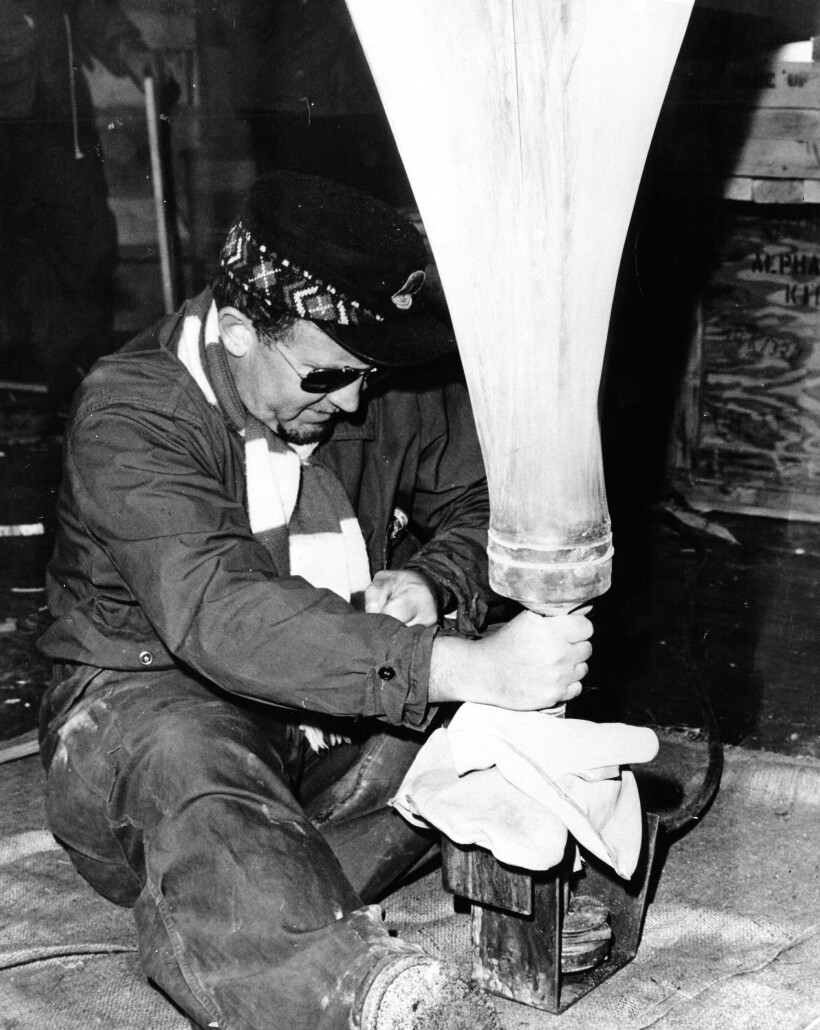
John Brown with a stratospheric weather balloon.
AIP Emilio Segrè Visual Archives, Physics Today Collection. Brown John F1
Weather balloons are launched twice a day, every day, from around 900 locations around the world, by organizations including the National Weather Service. They carry scientific instruments to track temperature, humidity, wind, and atmospheric pressure and often fly as high as 20 miles above the Earth. Weather balloons have been a reliable way for meteorologists around the globe to track weather for over 150 years, and the technology to accompany them is only getting better. Unfortunately, due to recent administrative budget cuts by the U.S. government, fewer balloons are being launched in the U.S. as of March 2025.
In this image from the archives, John Brown, a member of the Ballistic Research Laboratories team, ties off a weather balloon. The Ballistic Research Laboratories team conducted upper-atmosphere balloon launches as part of an effort to develop our understanding of stratospheric water vapor properties in the Antarctic. These tests were conducted under National Science Foundation sponsorship by the Aberdeen Proving Ground scientists in the early 1960s.
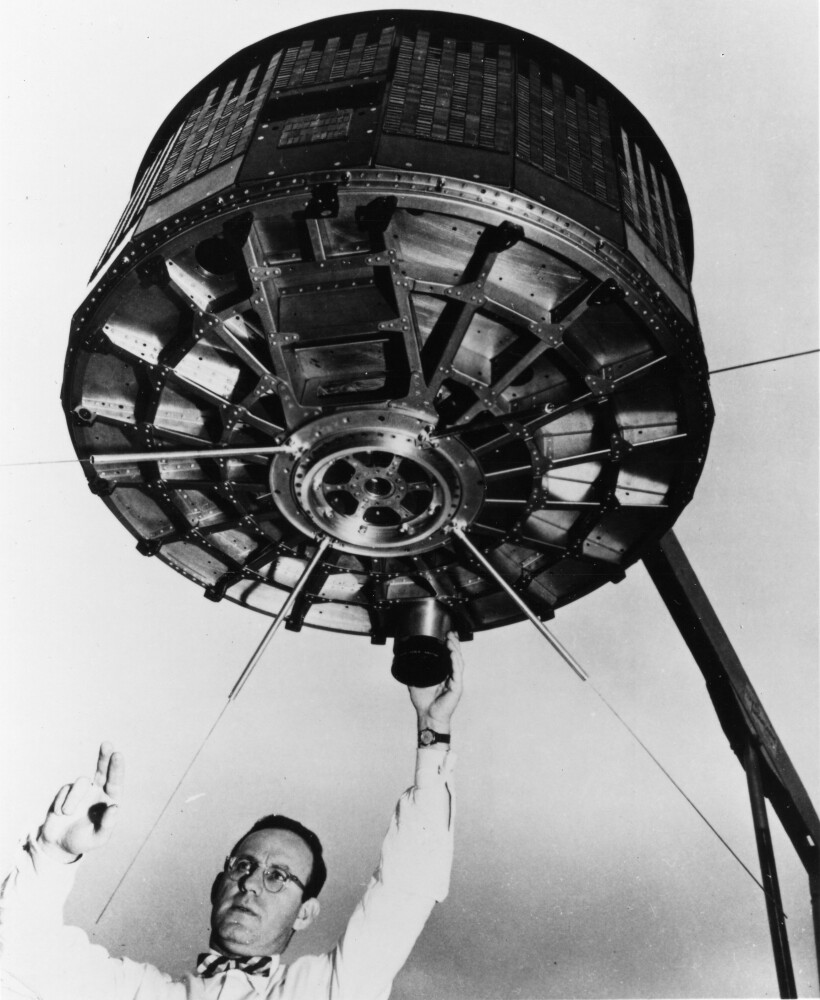
Abraham Schnapf, Manager of Program Management at RCA’s Astro - Electronics Division, Princeton, New Jersey is shown with the first TIROS weather satellite, circa 1960.
RCA News and Information, courtesy AIP Emilio Segrè Visual Archives, Physics Today Collection. TIROS F1
Before we part ways, I’ll take you a little farther away, right into Earth’s exosphere to learn a little more about the world’s first successful weather satellite. The Television Infrared Observation Satellite Program (TIROS) proved that we could observe Earth’s weather from satellites in space. TIROS I, seen here, launched on April 1, 1960, was operational for 78 days and was followed by multitude of TIROS satellites providing crucial weather information—TIROS-3 is credited with the discovery of Hurricane Esther in 1961.
Three of my favorite things to talk about are things you can often look up and see in our skies: planes, space, and weather. Is anyone else feeling inspired to become a backyard meteorologist, or is it just me?
References and Further Reading:
Brown , J. A., and E. J. Pybus. (1964, November 1). “Stratospheric Water Vapor Soundings at McMurdo Sound, Antarctica.” J. Atmos. Sci., 21, 597–602, https://doi.org/10.1175/1520-0469(1964)021<0597:SWVSAM>2.0.CO;2
Bush, Evan. “With fewer weather balloons due to government staffing cuts, forecasts may be less accurate.” NBC News. (2025, March 27). https://www.nbcnews.com/science/science-news/weather-balloons-stop-trump-cuts-forecasts-less-accurate-rcna198055
“How satellites track storms from space.” National Air and Space Museum. (2018, September 14). https://airandspace.si.edu/stories/editorial/how-satellites-track-storms-space
“Meteorology & Climate Pioneer, Dr. Warren Washington.” (2014, March 3). The Weather Channel via YouTube. https://www.youtube.com/watch?v=bvJ4jTy2mTk
Mitchell, C. (2024, February 19). “Here’s why meteorologists launch weather balloons every day.” AccuWeather. https://www.accuweather.com/en/weather-news/heres-why-meteorologists-launch-weather-balloons-every-day/877665
NASA. (2023, August 17). “TIROS - NASA Science.” NASA. https://science.nasa.gov/mission/tiros/
“Origin of wind.” (n.d.). National Oceanic and Atmospheric Administration. https://www.noaa.gov/jetstream/synoptic/origin-of-wind
Shepherd, M. (2018, February 2). “Dr. Warren Washington: A pioneering black climate scientist that overcame more than skepticism.” Forbes. https://www.forbes.com/sites/marshallshepherd/2018/02/02/dr-warren-washington-a-pioneering-black-climate-scientist-that-overcame-more-than-skepticism/



